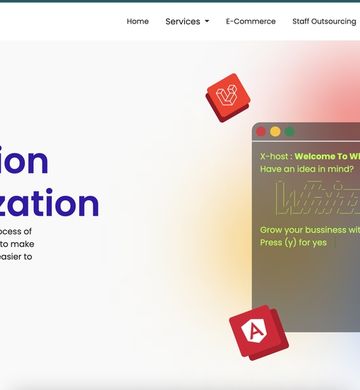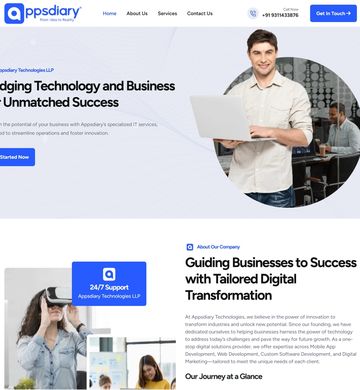Business Client need Web Development
Contact person: Business Client
Phone:Show
Email:Show
Location: Watford, United Kingdom
Budget: Recommended by industry experts
Time to start: As soon as possible
Project description:
"Goal
Build a human-like AI tutor prototype that delivers one high-quality, interactive 10-minute lesson for GCSE Maths (expandable to English/Science). It should feel warm, supportive, and clear—like a great human tutor—while staying transparent, safe, and privacy-respecting. The lesson must follow an evidence-based arc with checks for understanding and adaptive help when students struggle. (Full instructions on the pdf attached)
Human‑like Ai Tutor — Roadmap, …
Scope (MVP)
Lesson format (10 mins):
Emotional check-in → 2) quick prior review → 3) objectives/relevance → 4) worked example → 5) guided practice → 6) independent practice → 7) wrap-up/next steps. (Rosenshine-inspired arc; mastery gates & error-specific hints.)
Human‑like Ai Tutor — Roadmap, …
Key capabilities
Voice out (TTS): natural, expressive neural TTS (e.g., Azure/ElevenLabs).
Voice in (ASR): real-time speech recognition with barge-in (student can answer/interject).
Adaptivity: mastery-based branching; targeted hints; retry/reteach on errors.
Affect cues (no camera): adapt to hesitation/latency/phrases like “I don’t get this” (slow down, add encouragement, offer hint).
Human‑like Ai Tutor — Roadmap, …
Safety & transparency: clear “You’re talking to an AI tutor”, mic opt-in, content moderation, age-appropriate defaults.
Human‑like Ai Tutor — Roadmap, …
Authoring (v0): lesson script/branches in JSON/YAML + simple review/edit path (even a basic admin or config file).
Platforms: Responsive web (desktop & mobile; Chromebook-friendly). PWA acceptable.
Out of scope (for MVP): peer chat, video avatars, AR, full catalog, certification.
Human‑like Ai Tutor — Roadmap, …
Deliverables
Working web prototype of the 10-minute GCSE lesson (voice in/out, adaptive flow, safety/consent UI).
Lesson script & branching encoded (JSON/YAML) + simple way to tweak copy/hints.
Deployment: hosted demo or reproducible setup (Docker/readme/env keys).
Docs: README (run/deploy), how to edit lesson content, API keys/config, known limits.
Acceptance criteria
Full 10-minute run-through with clear, friendly narration and low-friction turn-taking.
At least one adaptive branch on incorrect/uncertain answers (reteach + hint, then retry).
Barge-in works: student can interrupt to answer; tutor stops and listens.
Safety: AI identity disclosure, mic permission flow, basic moderation path.
Human‑like Ai Tutor — Roadmap, …
Performance: snappy UX; no blocking waits between turns (streaming/fast responses prioritized).
Mobile & desktop: responsive, touch-friendly UI.
Nice-to-haves (if time allows)
“Repeat last explanation” button; light avatar/animation to signal speaking/listening.
Small analytics panel (local) for attempts, time-to-answer.
Basic educator page listing lesson steps for quick edits.
Suggested tech (open to alternatives)
Frontend: React/Next (or Vue) + Web Audio/getUserMedia; PWA; WebSockets/WebRTC where helpful.
Speech: Azure Speech / Google Cloud / ElevenLabs (expressive TTS); browser Web Speech API if suitable.
Logic: lightweight state machine for lesson phases & mastery gates.
Backend: Minimal Node/Express or Python FastAPI proxy for speech APIs + moderation; keep content in JSON/YAML.
Safety: simple moderation (keyword list or API), consent copy, logs. (Regulatory posture: UK GDPR/Children’s Code principles.)
Human‑like Ai Tutor — Roadmap, …
Implementation plan (6 weeks max; can deliver faster)
Week 1 — Plan & setup
Finalize topic (e.g., GCSE Maths: algebra step-by-step). Lock lesson script, misconceptions, hints.
Scaffold app; pick TTS/ASR; set keys; draft consent copy.
Human‑like Ai Tutor — Roadmap, …
Week 2 — Voice I/O
Integrate expressive TTS; implement ASR capture; prototype barge-in (stop playback on user speech).
“Say–listen–respond” loop working.
Week 3 — Adaptivity
Encode script + branching (correct → advance; incorrect/hesitant → hint/reteach → retry).
Affect cues from latency/lexical phrases → slower pace/encouragement.
Week 4 — UX polish & safety
Responsive UI (subtitle captions, mic state, progress steps); repeat button; mobile testing.
Safety: AI identity banner, mic opt-in, basic moderation, fallback to text input.
Week 5 — Test & refine
Edge cases: silence, mis-recognition, multi-attempt loop. Tune thresholds; improve copy/SSML.
Documentation: run/deploy, content editing.
Week 6 — Deploy & handover
Hosted demo or Docker; final fixes; walkthrough & code handover.
(Reference roadmap pillars: pedagogy, empathy/affect, low-latency streaming, safety, educator control.)
Human‑like Ai Tutor — Roadmap, …
Budget & commercials
Budget: £750-£1500 all-in (contractor to propose API usage assumptions).
Engagement: fixed-price with milestone payments (see below).
Ownership: full source code + rights to extend; contractor may reference work generically in portfolio.
Milestones (suggested)
M1 (20%) – Architecture & lesson script signed off; TTS/ASR “hello world”.
M2 (30%) – End-to-end voice loop & basic branching working.
M3 (30%) – Feature-complete MVP (UX, safety, adaptivity), mobile/desktop tested.
M4 (20%) – Deployed demo + docs + handover.
What to include in your bid
Relevant voice/ASR and real-time web examples (links).
Proposed tech choices (speech APIs, framework) and reasons.
Timeline per milestone + risks/mitigations (latency, ASR accuracy).
Notes on API costs during prototyping and how you’ll keep latency low.
Any UX ideas to make the tutor feel more human (prosody, pacing, empathy cues)." (client-provided description)
Matched companies (6)

WhizzAct Private Limited

Codetreasure Co

Junkies Coder

April Innovations

SYNERGIC SOFTEK SOLUTIONS PVT LTD
